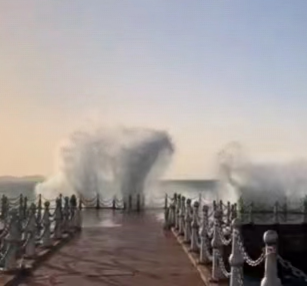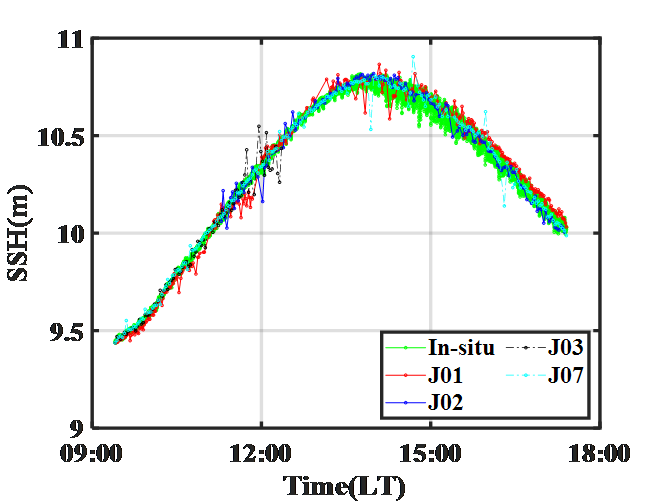Recently, Prof. Tianhe Xu from the "Satellite Navigation and Remote Sensing" Group of the the "Solar Burst and Its Impact on the Planetary Space Environment" and Innovation Team of Climbing Program of Shandong University has used the coastal GNSS-R altimetry technology to break through the phase stability tracking technology under high sea states, and obtained centimeter level sea surface height. The achievement is important and practical for coastal/satellite altimetry, ocean gravity field inversion, etc. This research was published in the top international journal, the Journal of Geodesy. The first author is Yunqiao He, the key postdoctoral fellow funded by Shandong University, and Prof. Tianhe Xu is the corresponding author.
The tide gauge stations and satellite altimetry are the two traditional technology to obtain sea surface height, which have low spatiotemporal resolution and high construction costs, restricting further understanding of the marine environment. GNSS-R (Global navigation satellite system reflectometry) altimetry utilizes GNSS satellites as illuminators, providing global kilometer level sampling and hourly level revisits. However, the code phase measurement accuracy is poor, while the carrier phase measurement accuracy is high, but it is difficult to employ under high sea states.
The research team conducted many coastal and shipborne experiments on the support of Shandong University. Aiming at the problem that the carrier phase observations are susceptible to the sea surface roughness, a dual frequency reflected signal combination method was proposed to recover and extract stable carrier phase observations under high sea states, while effectively utilizing the carrier phase observations within the range of 5 ° to 75 ° elevation angle. Compared with the in-situ reference, the accuracy under high sea states can reach 3-5 cm. GNSS-R altimetry is one of the important directions of Prof. Tianhe Xu 's team. In addition, the team has also made important achievements in snow depth estimation and soil moisture retrieval. These studies have been supported by the National Natural Science Foundation and the National Key Research and Development Plan.


Fig 1. High sea states photos and the altimetry results

The Satellite Navigation and Remote Sensing Research Group is mainly devoted to three directions: National integrated PNT, surface environmental monitoring and global sea level change, and satellite/UAV spectral remote sensing. The PI is Prof. Tianhe Xu, the Chief Scientist of the National Key Research and Development Program, and the Distinguished Young and Middle-aged Scholar (the first level) of Shandong University. The research team also has one part-time professor/academician of the Chinese Academy of Sciences, two National Distinguished Professors, one Distinguished Professor of the "Double Hundred Program for Foreign Experts" of Shandong Province, six Associate Professors/Associate Researchers, one lecturer, four post-doctoral, and over forty MSc/PhD students. The academic team is led by famous experts, with middle-aged and young experts as the backbone, and young academic as the main body, which has an important influence at home and abroad. Over the past five years, the team has undertaken more than 40 scientific research projects, including the National Key Research and Development Plan Project, the Wenhai Plan Project, the Beidou Major Special Project, the National Natural Science Foundation Project, and the Shandong Province Key Research and Development Plan; published over 100 SCI/EI papers, obtained over 30 patents and software copyrights, and won 4 provincial and ministerial level science and technology awards.
Related paper and link (# is the first author, * is the corresponding author):
1. Yunqiao He#, Fan Gao, Tianhe Xu*, et al. Coastal GNSS-R phase altimetry based on the combination of L1 and L5 signals under high sea states[J]. Journal of Geodesy, 2023, 97(2): 19.
Website: https://link.springer.com/article/10.1007/s00190-023-01712-6